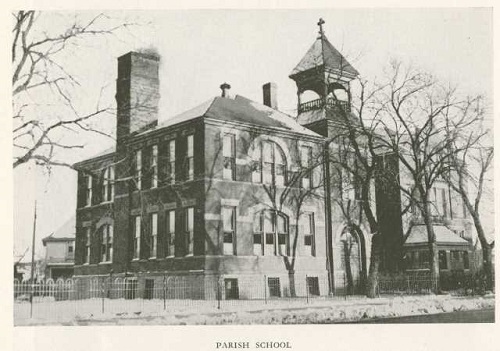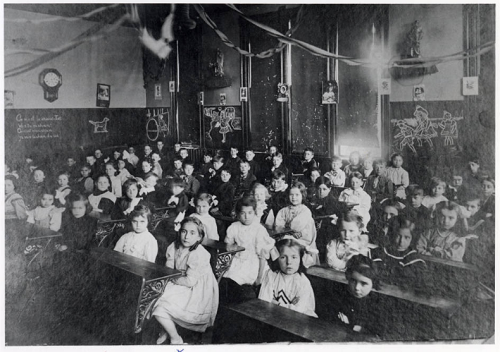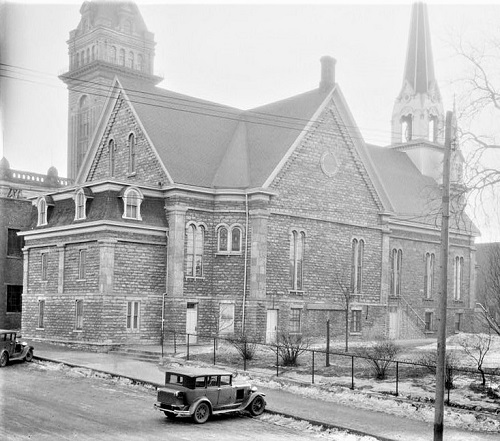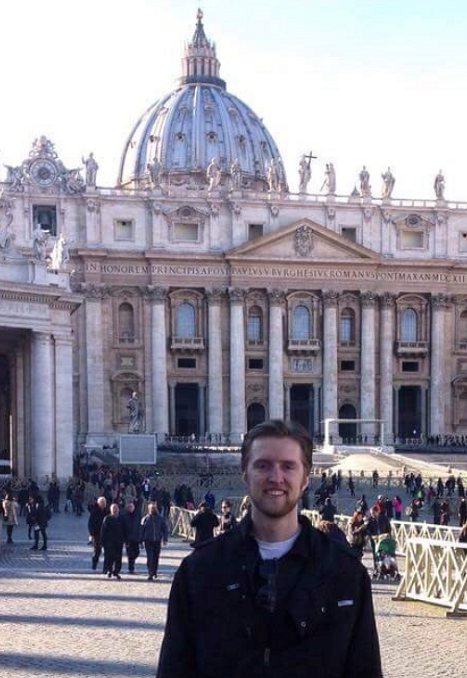Our Lady of Lourdes & the City: Part II
 Wednesday, December 29, 2021 at 6:19AM |
Wednesday, December 29, 2021 at 6:19AM |  Michael Rainville Jr |
Michael Rainville Jr | Article by Michael Rainville, Jr.
The history of Our Lady of Lourdes Catholic Church and the city of Minneapolis has been intertwined since their beginnings. In my November 27 article, I went over the early history of the church’s building and congregation. In 1855, the Universalists built their place of worship in a Greek Revival style, and twenty-two years later in 1877, the Catholic French-Canadians of Minneapolis and Old St. Anthony bought the building. During the next five years the congregation transformed it into a breathtaking French Gothic church that seemed like it was taken right out of France. From 1877 to the turn of the century, the church and the city of Minneapolis grew at very rapid paces as they welcomed settlers and immigrants, but that was just the beginning.
In 1882 the parish had over 350 families attending Mass at Our Lady of Lourdes, and with that many families there became an apparent need to expand their school, which was located in the basement. The school was outgrowing the space and it was not exactly in a convenient location for the neighborhood children to walk to, so in 1888, the parish acquired land on 6th Avenue and 5th Street NE for $4,000 to build a new school building. Once the new Notre Dame de Lourdes School was completed the Grey Nuns of Montreal took over and ran the school, and they taught every subject in French except for English language and Math classes. Soon after in 1906, the Sisters of St. Joseph Carondelet from St. Paul took over operations of the school upon the request of Archbishop John Ireland, and thus ended the tenure of French being used as the predominant language during classes.
 Notre Dame de Lourdes school
Notre Dame de Lourdes school
 Notre Dame de Lourdes School classroom taken around 1900
Notre Dame de Lourdes School classroom taken around 1900
The population of Minneapolis was continuing to grow very quickly during the turn of the 20th century. However, this growth did not include more French-Canadians immigrating to the city. Because of this, the parish saw its highest membership in 1901 of over 2,000 parishioners. The decline in membership was not immediate, but it was noticeable during the years to come. Those who grew up going to the now English-speaking Notre Dame de Lourdes School were more likely to intermarry with other English-speaking cultures throughout Northeast Minneapolis. This led to more families leaving the parish and moving to other parts of Minneapolis as Northeast was becoming crowded. Some time later in 1917 Archbishop Ireland once again made a change at the French Church by assigning the Marist Fathers to run the parish, and it became one of two churches in the archdiocese to not be run by diocesan clergy.
Ten years later in 1927, the Christian Brothers of nearby DeLaSalle Catholic High School agreed to assign the Marist Fathers of Our Lady of Lourdes as the chaplains of the school. This made the parish’s connection with the community even stronger. While the Marists are French in origin, the priests of the American Province of the Society of Mary who were now at the French Church decided to stop conducting Mass in French. It was not a permanent change, but this marked the end of a forty-year run of Our Lady of Lourdes truly being a French church.
 The back of the church taken from 2nd Street SE
The back of the church taken from 2nd Street SE
As made apparent by his actions with Our Lady of Lourdes, Archbishop Ireland made it a priority during his tenure to get the Catholics of Minneapolis and St. Paul to leave behind their cultures and become more American. If you visit any Catholic church in the archdiocese, it is clear that traditions have been passed down and are still important to the congregations, but if Archbishop Ireland’s campaign to make his churches more American did one thing, it was to make English the predominant language. In a melting pot of a city like Minneapolis, this was the only realistic outcome.
Both the city and its Catholic churches have always been diverse. From German and Italian to Ecuadorian and Vietnamese, this mosaic of cultures can be seen in every parish, including Our Lady of Lourdes. This diversity did not happen overnight, however. As churches began opening their doors to their neighbors and coming together under the English language in the early 1900’s, the slow process of uniting not only the Catholics of the community, but everyone in the community, had started. This change was difficult for the French Church as its membership was steadily going down for much of the following decades. The years to come for Our Lady of Lourdes would be the most challenging, but after these difficult times one of the church’s most prosperous periods would follow.
While my next installment of this series will touch upon Our Lady of Lourdes working hard to find success in the latter half of the 20th century and into the 21st, we already know the outcome. The church is once again a pillar of the community as they continue to welcome everyone with open arms and show support for the East Hennepin area. During this important week for Catholics around the world there are themes of redemption, rebirth, and renewal. By keeping these motifs in mind, the perseverance of the church and congregation have helped Our Lady of Lourdes make a strong comeback.
However, that story has yet to be written for another Our Lady. The fire at Notre Dame de Paris is heartbreaking for not only those who are religious, but also those who appreciate architecture, history, art, and culture. It may be sad and overwhelming, but if there’s a will there’s a way, and the Human Will is a very powerful force. It may take quite some time, but if Notre Dame de Lourdes in Minneapolis can make a comeback, so can Notre Dame de Paris, I know it.
- - - - - - - - - - - - - - - - - - - - - - - - - - - - - - - - - - - - - - -
 About Michael Rainville, Jr.
About Michael Rainville, Jr.
A 6th generation Minneapolitan, Michael Rainville, Jr. received his B.A. in History, Graduate Certificate in Museum Studies, and M.A. in Art History from the University of St. Thomas.
